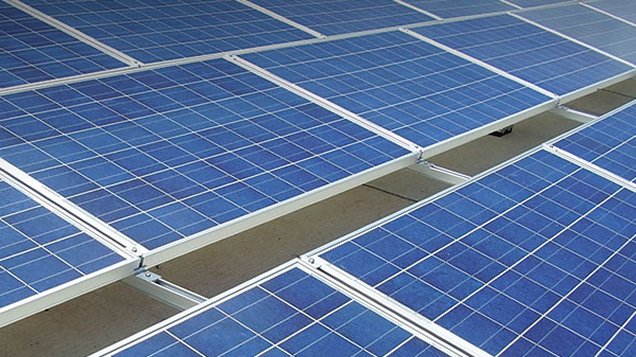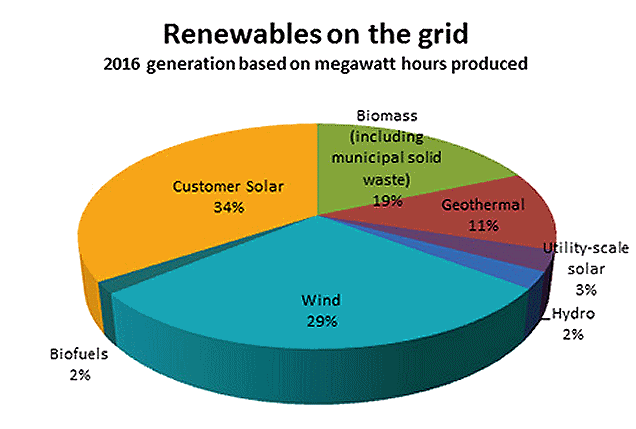
A small-scale solar led energy revolution in Hawaii – Image: Hawaiian Electric Companies
26 percent of the electricity used in Hawaii last year came from renewable resources – up from 23 percent in 2015. Hawaii’s impressive energy transformation has been a customer-led revolution.
On the state’s largest island, Maui, renewable electricity blew past the halfway mark in 2016, reaching 54 per cent compared to 49 per cent in 2015.
Like many island communities, Hawaii has traditionally had a heavy dependency on expensive and polluting oil for power generation, but that is now rapidly changing.
Figures recently released by the Hawaiian Electric Companies (consisting of Hawaiian Electric, Maui Electric and Hawaii Electric Light) indicate oil use fell to 8.5 million barrels in 2016, down from 10.7 million barrels in 2008 – a 21 percent decrease. This is even though the population of Hawaii has grown by more than 100,000 during that time-frame.
Leading the renewables charge has been customer-installed solar power systems, generation from which made up 34% of megawatt-watt hours produced in 2016; followed by wind power at 29%.

Source : Hawaiian Electric Companies
The Hawaiian Electric Companies Power Supply Improvement Plan forecasts exceeding the state’s targets of 30 percent renewables in 2020 (should be reached next year), 40 percent in 2030, 70 percent in 2040 and 100 percent by 2045.
Much of this new generation will come from solar energy.
“..our action plans estimate achieving a 52 percent RPS by 2021 by adding 326 megawatts (MW) of rooftop solar, 31 MW of Feed-In Tariff (FIT) solar generation, 115 MW of demand response (DR), 360 MW of grid-scale solar, and 157 MW of grid-scale wind resources across all five islands we serve,” states the Plan’s Executive Summary (PDF).
It’s now forecast Hawaii will reach 100 percent renewables by the end of 2040, five years ahead of time.
The Companies’ had set a goal of reducing greenhouse gas emissions to 2010 levels by 2020. This is now expected to be 16 percent below the 2010 level by that year.
Some fast facts on solar in Hawaii, sourced from SEIA:
- Solar Capacity Installed: 674.4 MW (109.9 MW in 2016)
- US Ranking: 13th (20th in 2016)
- Homes With Solar Panels: 170,000
- Percentage of State’s Electricity from Solar: 7.05%
Electric vehicle use on the islands is also on the rise, with the number of registered plug-in EV’s breaking the 5,000 mark. Apparently, this makes Hawaii second only to California in EV’s per capita.
While Hawaii has had its fair share of problems in its pursuit of renewables, it’s encouraging to see the state not only staying on track, but going above and beyond.

 RSS - Posts
RSS - Posts



How are they to achieve this utopian result without reliance on backup? Hawaii has many microclimates over small areas, but also gets significant weather events that would reduce renewable energy production below minimum requirements on a regular basis.
Does anyone remember playing Sim City back in the day? It used to be so uneconomical to build solar plants and wind farms compared to coal plants and nuclear. Solar and wind yield compared to traditional plants was so low. Thankfully, decades later, that’s all changed.